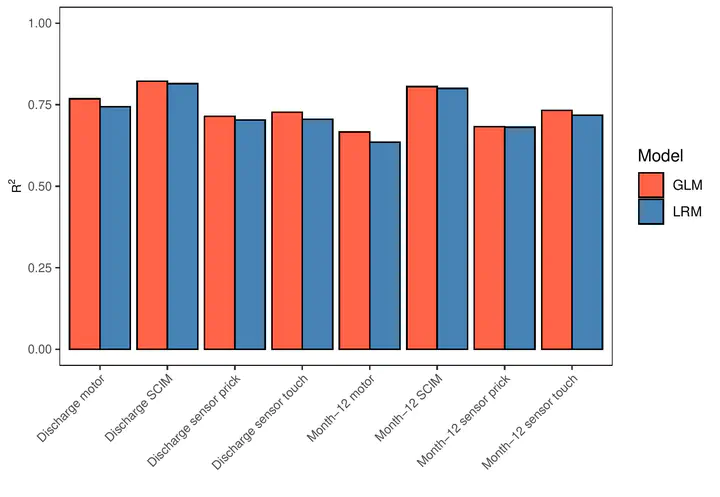Routinely measured haematological markers can help to predict AIS scores following spinal cord injury

Abstract
Neurological outcomes following spinal cord injury (SCI) are currently difficult to predict. Whilst the initial American Spinal Injury Association (ASIA) Impairment Scale (AIS) grade can give an estimate of outcome, the high remaining degree of uncertainty has stoked recent interest in biomarkers for SCI. This study aimed to assess the prognostic value of routinely measured blood biomarkers by developing prognostic models of AIS scores at discharge and 12-months post-injury. Routine blood and clinical data were collected from SCI patients (n=427) and blood measures that had been assessed in less than 50% of patients were excluded. Outcome neurology was obtained from AIS and Spinal cord independence measure III (SCIM-III) scores at discharge and 12-months post-injury, with motor (AIS) and sensory (AIS, touch and prick) abilities being assessed individually. Linear regression models with and without elastic net penalisation were created for all outcome measures. Blood measures associated with liver function such as alanine transaminase were found to add value to predictions of SCIM-III at discharge and 12-months post-injury. Furthermore, components of a total blood count including haemoglobin were found to add value to predictions of AIS motor and sensory scores at discharge and 12-month post-injury. These findings corroborate the results of our previous preliminary study and thus provide further evidence that routine blood measures can add prognostic value in SCI, and that markers of liver function are of particular interest.